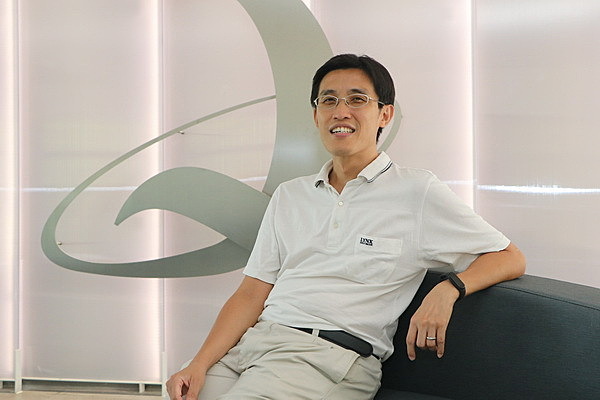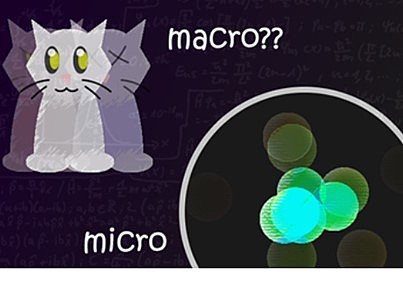As a physical theory for predicting observations at the (subatomic) microscopic level, quantum theory is essentially impeccable. However, on the applicability of the theory at the macroscopic scale, there is still hardly any agreement among the physics community. In particular, scientists have long known that if Nature is to conform to the predictions of quantum theory (at all scales), then some commonly held beliefs would have to give way. There is, however, again no consensus on what should be dismissed.
Through international collaboration with Griffith University, Australia, Associate Professor Yeong-Cherng Liang, a member of QFort showed that even if we drop one of the 4 premises used in establishing the existing no-go result due to Bell, we still have an incompatibility between quantum predictions and 3 widely-held beliefs. This marks an important breakthrough, after half a century, in our understanding of the world depicted by quantum theory. The scientific findings have since been published in the world-leading peer-reviewed journal Nature Physics in mid-August.

Associate Professor Yeong-Cherng Liang
Liang said, "Since the 1960s, physicist John Bell already showed that if quantum theory is to be universally applicable, we would have to give up one or more physical principles that most people would take for granted. More precisely, in the language of the present work, the following 4+1 premises cannot hold true simultaneously: (1) Absoluteness of Observed Events: an observed event is a real, single, event, rather than being well-defined only with respect to individuals (2) No superdeterminism: an observer could choose his/ her measurements in a way that is independent of the system to be measured (3) Locality: given sufficient knowledge of the past, local measurement outcome cannot be correlated with measurements carried out in a spacelike separated manner (4) Outcome independence: even given the outcome of a spacelike separated measurement, theoretical probability of a local measurement outcome does not change (5) Universal validity of quantum theory: quantum theory is universally valid in its prediction of outcome probabilities."
Liang drew the following analogy “We may envisage 5 food ingredients that individually make an excellent pot of soup with a similar flavor, but when put together, they result in something that has an awful taste.” He added, “We have no idea why this is so nor the culprit that should be disposed of to salvage the food.” To appreciate the significance of this work, he further remarked that one needs to first get acquainted with the world depicted by quantum theory: “observation” or “measurement” is a crucial aspect of the theory. He said "The general view is that states of affairs are only determined after a measurement. To some extent, this is responsible for the peculiar Schrödinger’s cat, which is both “dead” and “alive”, and the famous question by Einstein on whether one really believed that the moon was not there when no one looked at it."
Also predicted by the theory is the notion of “incompatible properties”. For example, in the quantum world, the position and the momentum of a particle represent a set of incompatible properties, i.e., they are not simultaneously well-defined. This is highly counterintuitive when seen from our day-to-day experience. Take a moving car as an example. If this were to be a “quantum car”, then we would only be able to measure precisely the car’s velocity or its position but never both at the same time.
Returning to the seminal discovery by Bell, Liang remarked, “A rejection of (1) denies, to some extent, the existence of an objective world external to oneself. This means that when scientists explore Nature, they may also have to specify to whom this Nature is defined. Absurd! Premise (2) is an implicit assumption of the scientific method: if we could not freely decide which property of a system we would like to determine, how can we go about determining the properties of each individual system, and how could we do a medical trial for COVID-19 treatments?” He further clarified, “Einstein’s theory of relativity, which most physicists would hold fast, has provided the basis for premise (3). Due to the success of quantum theory, many physicists would also tend to believe in assumption (5), i.e., on the universal applicability of quantum theory. Consequently, most people have presumably opted to give up premise (4) in view of Bell’s no-go theorem."
However, this international collaboration showed that even if we assume only (1), (2), (3), and (5), we would still obtain a contradiction. This is shocking to all those who feel that they have found a way out by rejecting premise (4). After all, premise (4) was not at all involved in the strengthened no-go result. Who then is the culprit? Long ago, the Hungarian physicist Eugene Wigner already raised his doubt on the universal validity of quantum theory. Indeed, the present work has exploited a thought experiment that he proposed decades ago. To some physicists, this has provided further evidence to reject the hypothesis that “quantum theory is applicable at the macroscopic scale”, i.e., the theory has to be revised somehow. There are also a number of physicists who believe that premise (1), i.e., the absoluteness of observed events, has to be given up. Even though the present work does not tell us which of these premises is to be given up, it still marks important progress in the development of theoretical physics as it puts further nontrivial constraints on how all future physical theories that are empirically adequate. In fact, apart from this theoretical finding, the team has also carried out a microscopic experiment showing that strong correlations invalidating the simultaneous validity of premise (1), (2), and (3) can in principle be carried out.
Also worth noting are the interesting remarks from one of the team leaders behind this collaboration, “Our dream experiment is one where the ‘friend’ is a human-level artificial intelligence program running on a massive quantum computer. I think that would be a pretty convincing test of whether quantum theory fails for observers, or whether one of the three fundamental assumptions is false. But that’s probably decades away.” said Prof. Howard Wiseman from Griffith University. He added, “It has long been recognized that quantum computers will revolutionise our ability to solve hard computational problems. What we didn’t realise until we started this research is that they may also help answer hard philosophical problems -- the nature of the physical world, the mental world, and their relationship.”
Source: NCKU News Center
【Further Reading】
> This Twist on Schrödinger’s Cat Paradox Has Major Implications for Quantum Theory
> Quantum Paradox Points to Shaky Foundations of Reality
> Quantum Paradox Suggests the Fabric of Our Reality Is Inconstant
